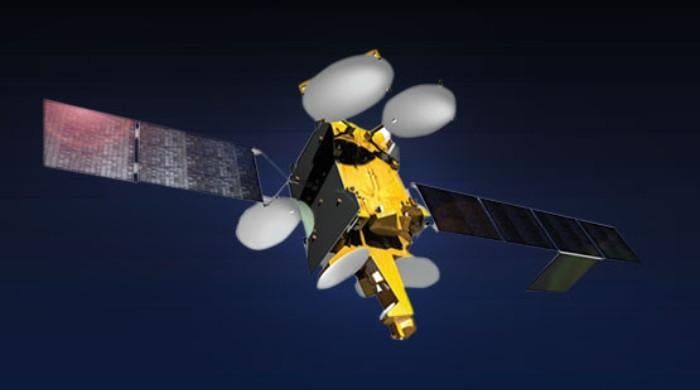- The launch will take place from XSLC, China.
- The launch ceremony will be broadcast live for the media.
- Pakistan has sent at least six assets into space.
KARACHI: Space and Upper Atmosphere Research Commission (Suparco) spokesperson on Tuesday announced that Pakistan's PAKSAT MM1 multi-mission communications satellite will be launched on Thursday.
Suparco scientists and engineers were examining PAKSAT MM1, the spokesperson said.
The launch will be carried out from the XiChang Satellite Launch Center (XSLC), China, the national space agency said, adding that the project is part of the National Space Program 2047.
According to a statement from Suparco, PAKSAT MM1 was conceived as a joint venture between Suparco and the Chinese aerospace industry, taking into account the country's growing needs in the broad spectrum of communications and connectivity.
“This satellite project is a hallmark of technological cooperation between the People's Republic of China and Pakistan,” the statement read.
He added that the satellite, based on advanced communication technologies, will play a vital role in the socio-economic improvement of the country.
“It will prove to be a stepping stone in the country's transformation towards a digital Pakistan,” Suparco said.
The inquiry commission stated that the launch ceremony will be broadcast live to the media from its establishments in Karachi and Islamabad.
It should be noted that Pakistan has so far sent at least six assets into space such as BADR-A, BADR-B, PAKSAT 1-R, PRSS-1, PakTes 1-A and iCube Qamar.
Earlier this month, iCube-Qamar, Pakistan's first satellite mission to the Moon, sent back the first images of the Moon captured in lunar orbit after its ascent into space.
According to IST, Qamar became a groundbreaking breakthrough: it became the first Pakistani satellite to enter the lunar orbit and completed its rotation in 12 hours.
Scientists called the development “a great success overall.”












